Colvin Fountain (Moffat Ram)
Fountain In Dumfries And Galloway, Scotland
A bronze cast blackfaced ram atop the pink corncockle stone blocks of a Victorian drinking fountain in Moffat.
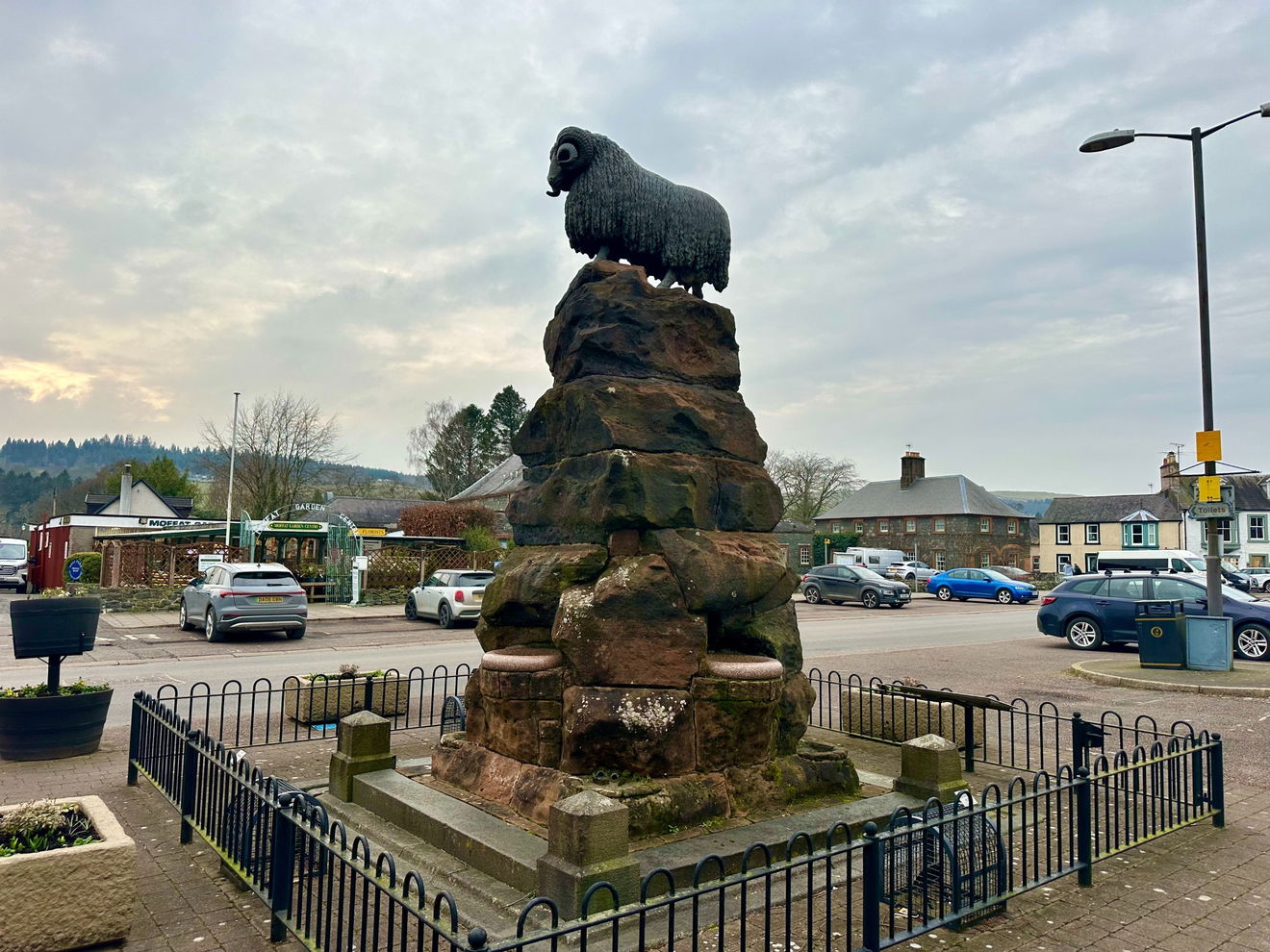
On a raw and jeelit afternoon, with a bunch of flaggies on the other side of the Southern Uplands, we bouled into Moffat to defrost and drink cocoa.
From the café , sitting atop a red sandstone crag, we could see a ram, more at home on the hills than the high street. On closer inspection, this was The Moffat Ram, more formally known as The Colvin Fountain.
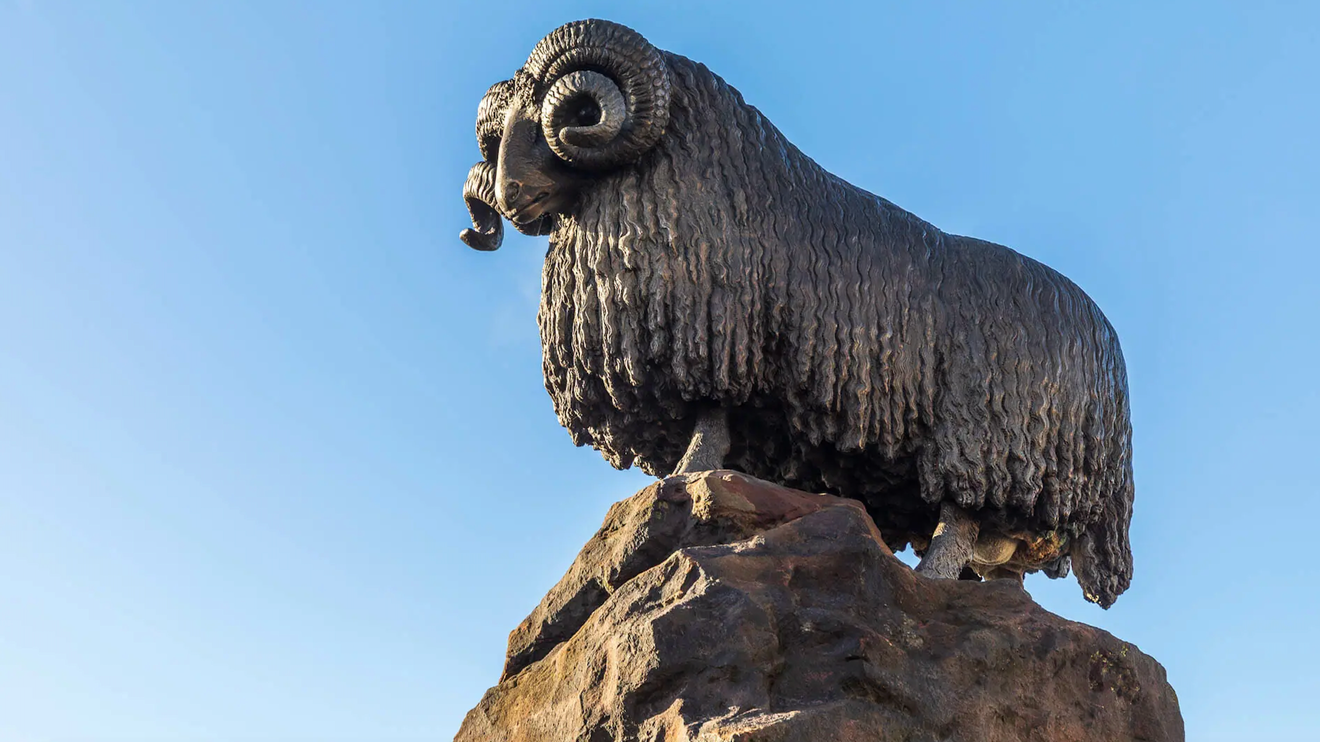
The strong and stern faced sheep is symbolic of the town's long association with the wool trade and stands astride rough hewn blocks of pink corncockle freestone, quarried from the outskirts of Dumfries.
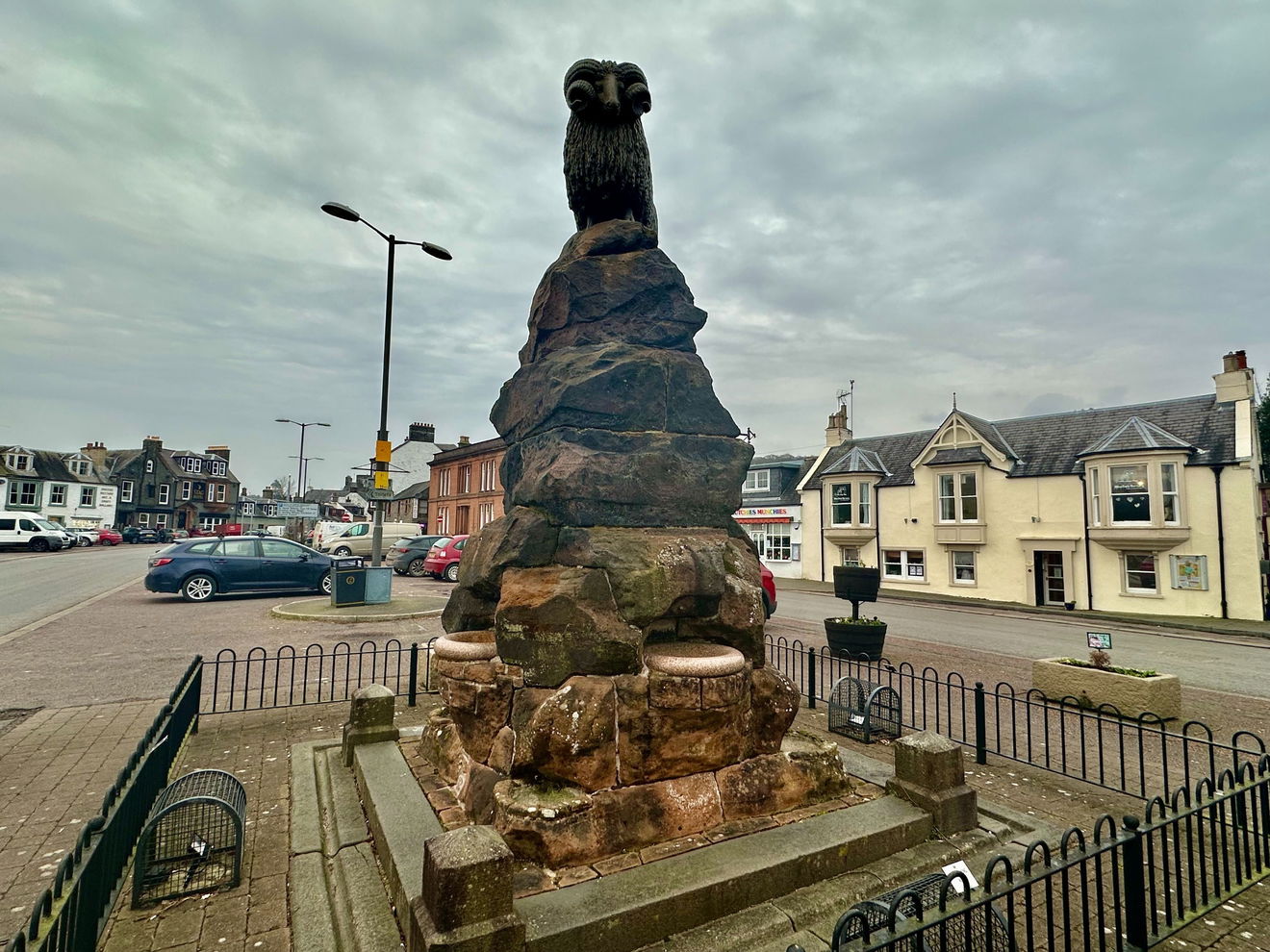
Gifted to the people of Moffat in November 1875, the fountain shown below from this 1880 image from the Canmore Collection, was bequeathed by local philanthropist William Colvin, a wealthy businessman who made his money in iron and sheep breeding.
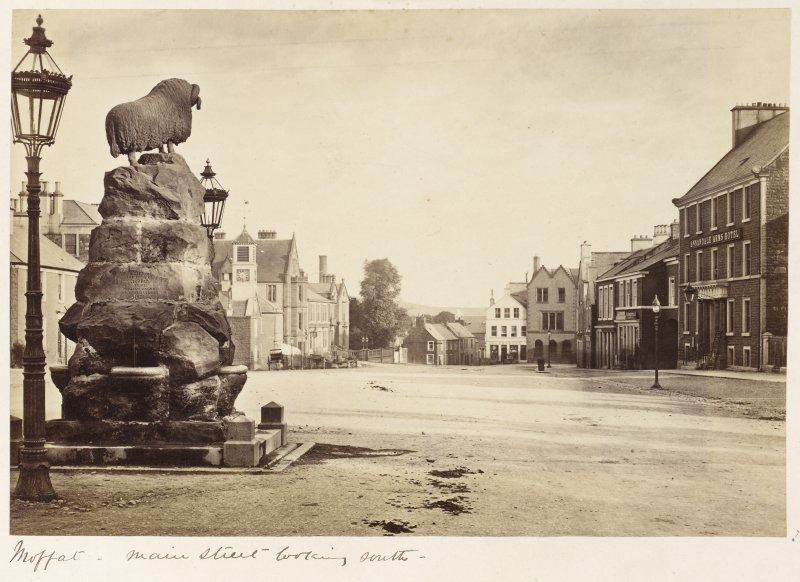
Colvin commissioned sculptor William Brodie to design and build the fountain. Brodie, born in 1815 in Banff, was the son of a shipmaster. Having previously worked as a plumber, he was inspired by his brother, also a sculptor, to take evening classes at The Mechanic's Institute in Aberdeen, where he learnt about art and science. His technical background led him to an interest in small-scale modelling and he learnt to craft in wax and clay. Brodie was best known for his sculpture in Edinburgh of Greyfriars Bobby on The George IV Bridge, also a drinking fountain.


We loved the sturdy and resolute expression of the animal. Blackfaced sheep are a hardy Scottish breed known for their impenetrable horns and bright white wool.
Look at the texture of the horns, like keratin coated rope. I bet they could give you a boot up the bottom! And my eyes were drawn to the individual strands of wool on his back, almost kilt like. You can imagine the waxy feel of the wool and Broadie has captured it in such detail.
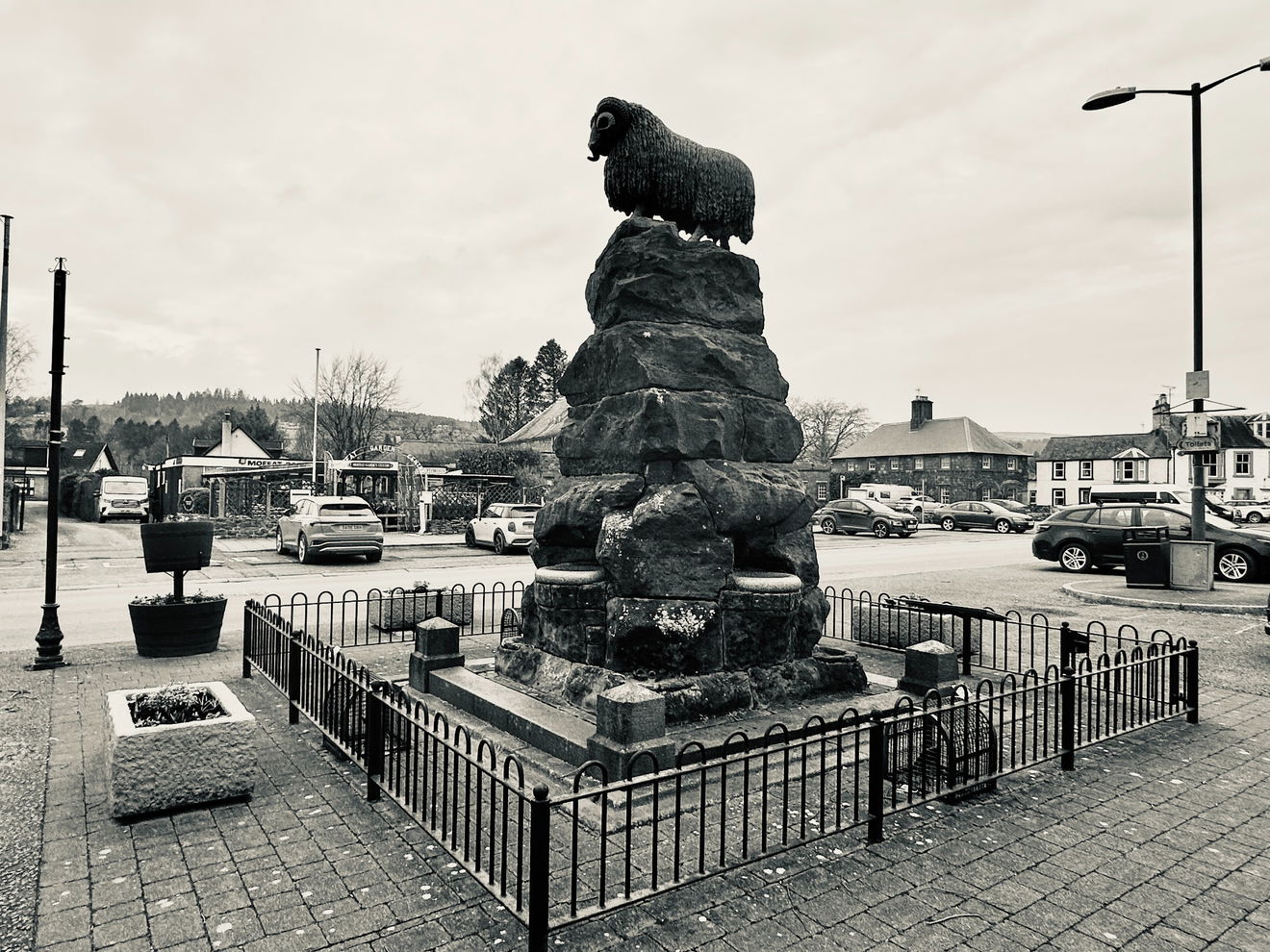
Looking at the fountain as a whole, it's less decorative and more grounded in its natural surrounds than other Victorian fountains. Its rugged appearance would have resonated with the people of this rural town, which, from the mid 1600s, grew from a small village into a popular spa town. People believed the saline and sulphurous waters to have had healing properties, which aided conditions like gout, rheumatism and stomach and skin conditions. How nice it would be today if, aside from Botox and collagen, people were content to just sup at the town fountain. I'm a big fan of council pop meself!
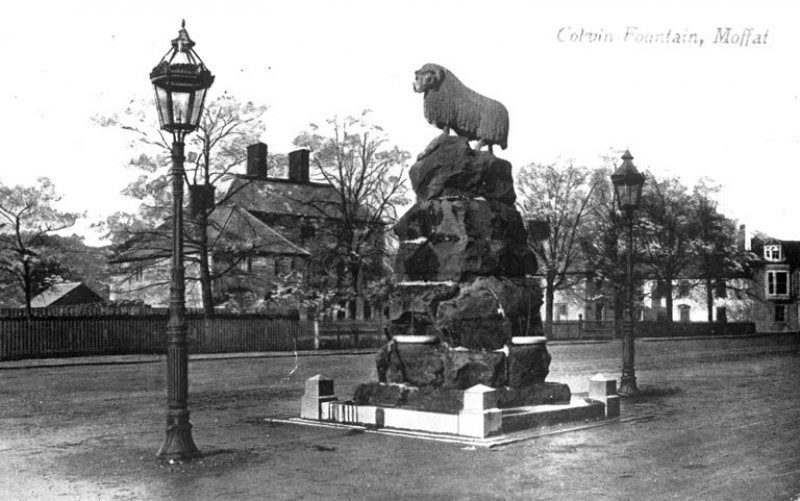
From the 1730s, people were attracted to Moffat for its iron springs and the curative waters became so popular they were piped down from the well in the woods to a specially built bath house. The likelihood was that Colvin, like many other Victorian philanthropists, wanted to give the gift of clean water to the people of Moffat and the spring water was conveyed through lead pipes from the hillsides into the granite sinks of the fountain. Perhaps the persuasive philanthropic measures of such people to dissuade the commoners from the evils of drink, in favour of the clear stuff, might have ended up bumping them off. Lead poisoning was a serious health concern during Victorian times, so mebbeees the people of Moffat were actually safer on the whisky!
Photo courtesy of the special collection at The University of St Andrews
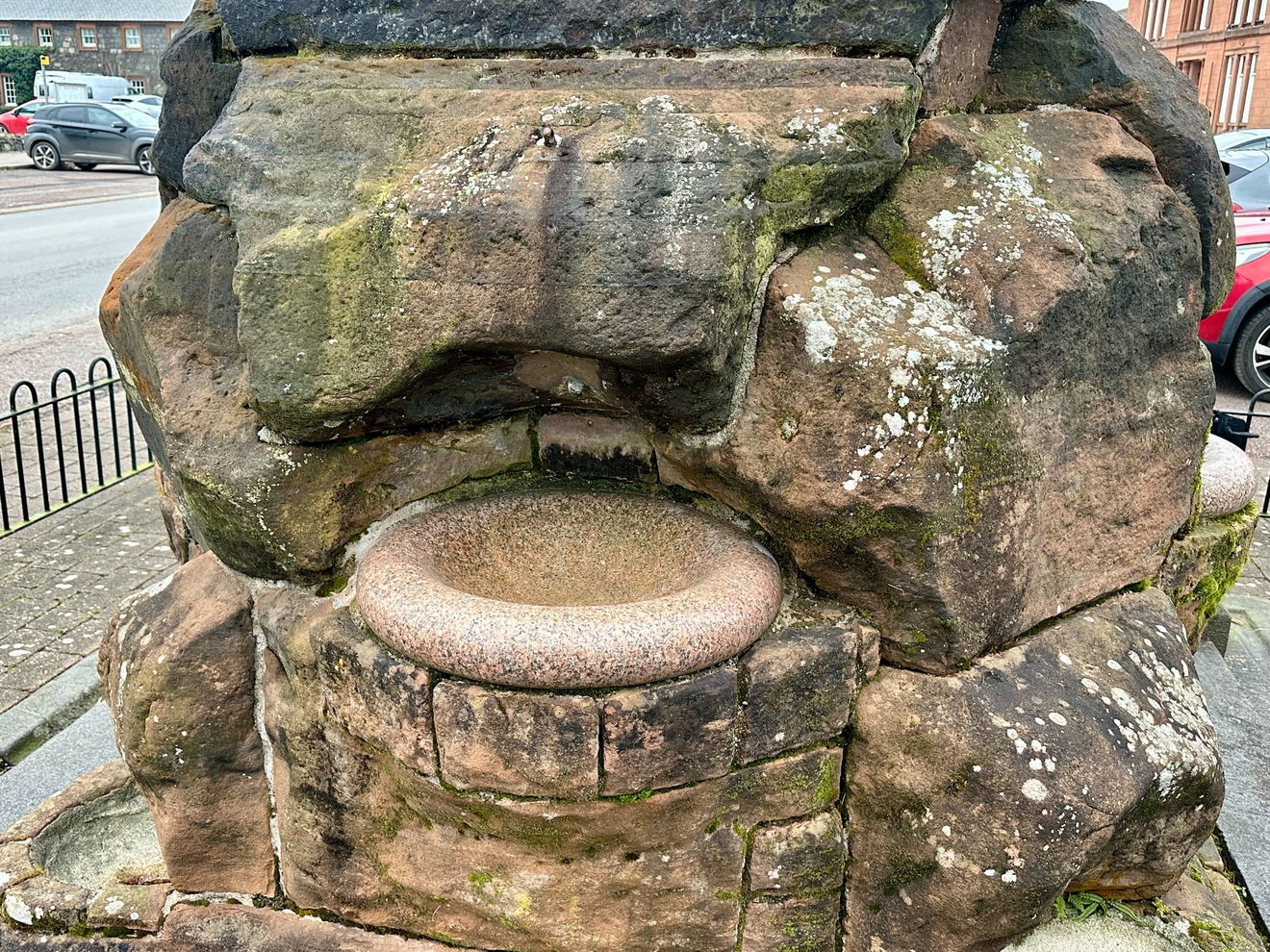
Have a look at each rounded basin. There are four, one on each face of the fountain. They are cut from beautifully smooth Peterhead granite formed over 410 million years ago during the Devonian era and made popular during the 18th and 19th centuries from its use in decorative structures. Look at the beautifully black speckled pink of the granite, perfectly complementing the corncockle stone. The black bits are known as xenoliths, little dots of Devonian stones from far off lands. There's so much to know about stone! It holds so much history and change. I love it.


Each basin would have had an iron cup to aid a hearty gobfull. If you cast your eyes down, there are four more bowls at each foot of the fountain, which would have been positioned for passing pets, like dogs and horses, maybe cattle and sheep being taken to the mart. So much consideration in a piece of street furniture.
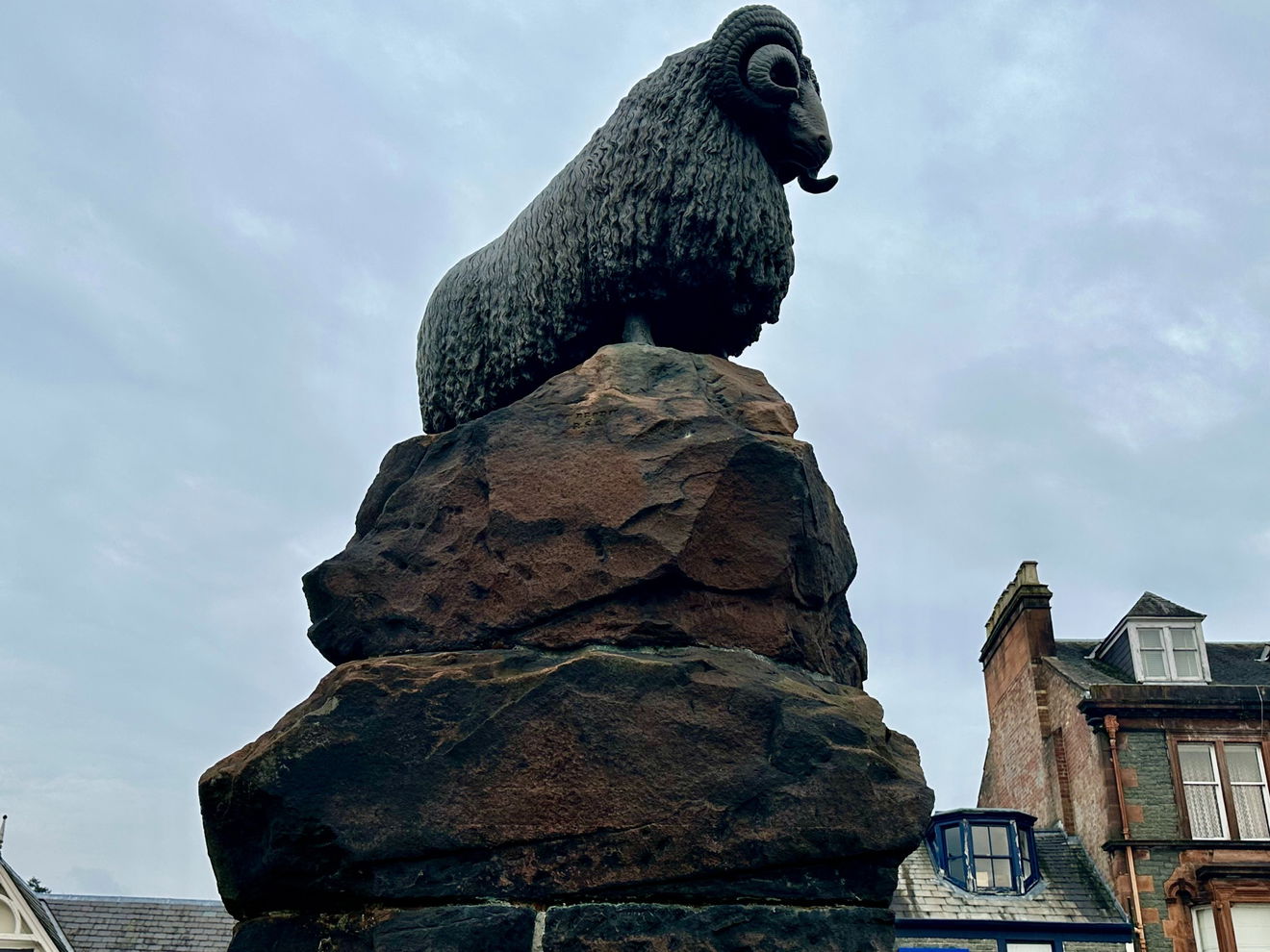
If you look closely, the ram has no ears, but maybe hard to fathom under the girth of those horns. Rumour has it that when the statue was unveiled a local farmer cried out “It has nae lugs!” The artist was so aghast at his omission of ears that he returned to his room in the Annadale Arms Hotel and allegedly took his own life, his ghost patrolling the corridors of the building at night to this day... This is however utter sheepwash and Brodie died in Edinburgh in 1881 aged 66!
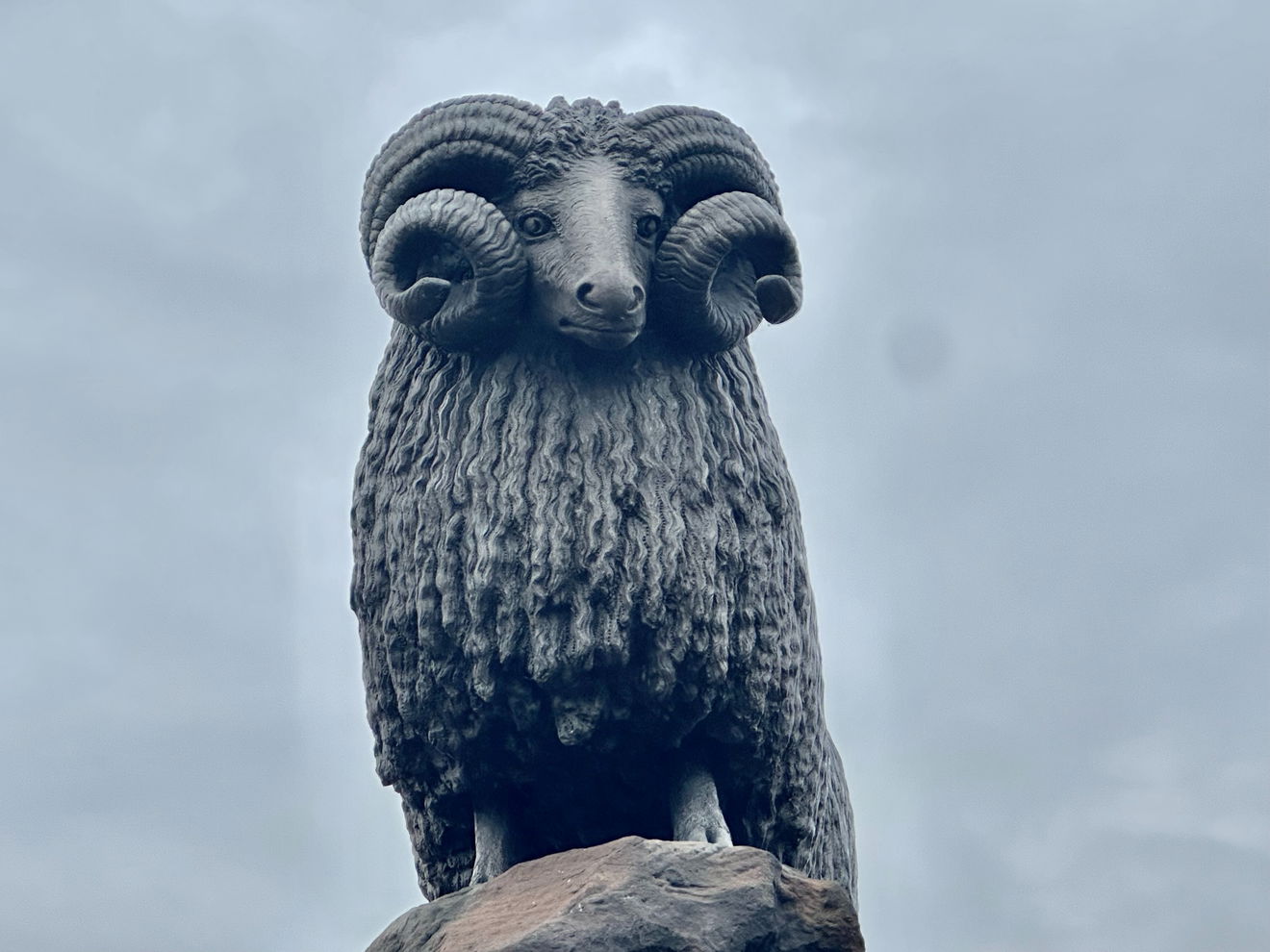
Meanwhile, in other news, The Ram on the Colvin Fountain is the star attraction on the local toffee brand, Moffat Toffee, and is the rambunctious pin up star on their logo!
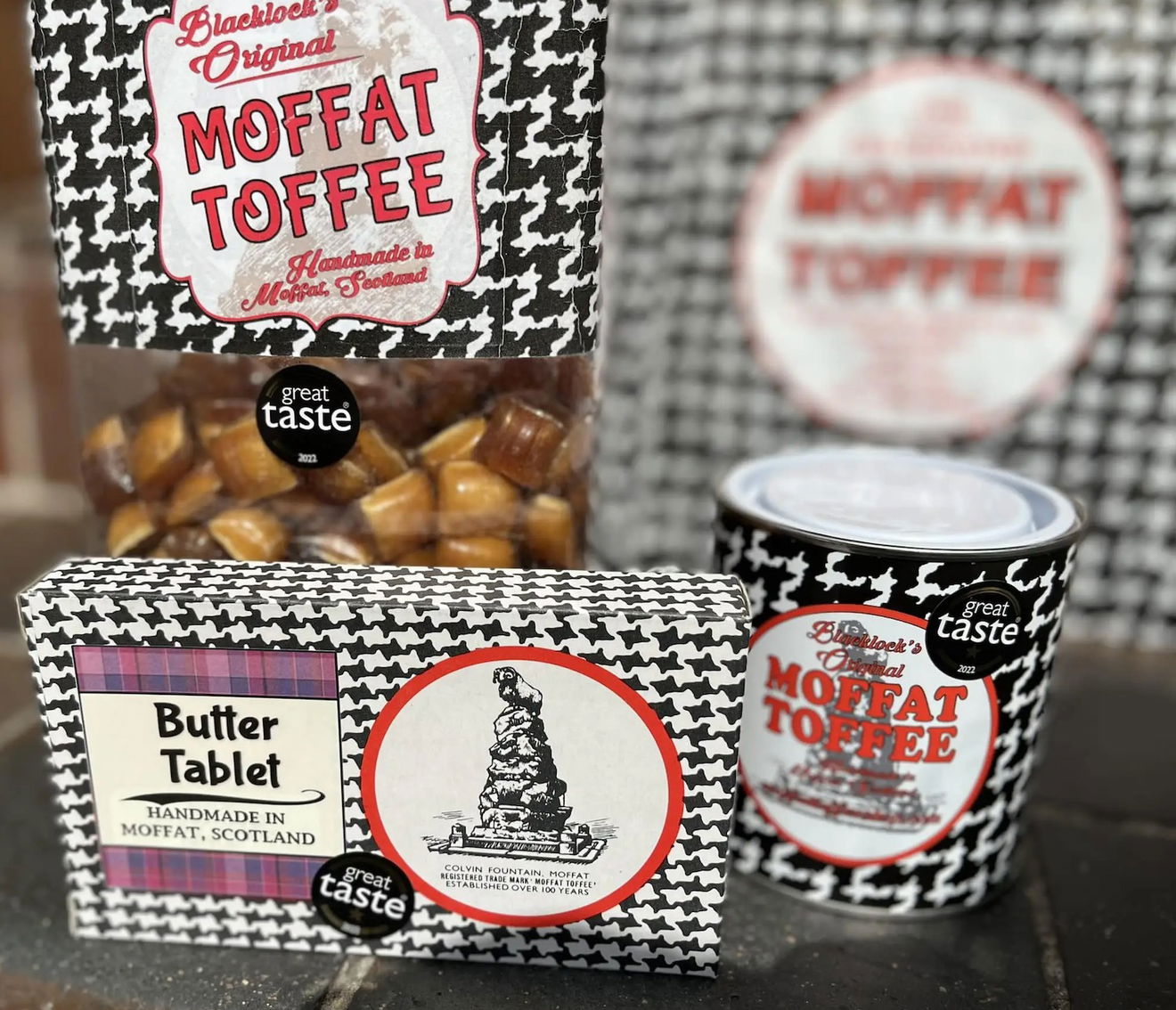
Get 2 points if you have visited this place. Already visited by 19 VIPs.
Login to the VIP area to add places to your bucket list, mark them as visited and more importantly see where you rank on the league table.
How To Find Colvin Fountain (Moffat Ram)
Where Is Colvin Fountain (Moffat Ram)?
Show Place On Google MapsLat / Long
55.333751, -3.444832
What three words
Where To Park For Colvin Fountain (Moffat Ram)?
In the car park in the centre of the town, right next to the fountain.
Contributed by Jos Forester-Melville
Highland loving human. Thalassophile. I love a good smile. Happiest heading for the hills with my pickup filled with kids and dogs! Working four days, we enjoy a Fridate, and usually spend it scouting out new scenery. I love a gated track, a bit of off roading and if it involves a full ford, well, that gets extra points! I go nowhere without a flask and binoculars, and love the small things in life that make it big…Goldcrests, dry stone walls, Deadman’s fingers, blackberries and quality clouds.
More Places from Jos
More Places In Dumfries And Galloway
Find more fabulous places in Dumfries And Galloway, Scotland and if you know of a place we haven't listed, then let us know.
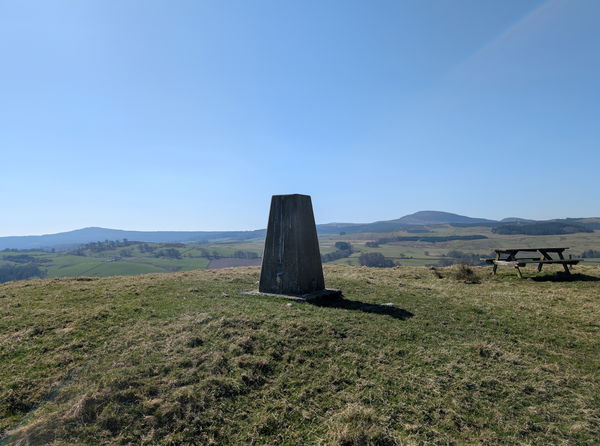
Mulloch Hill Trig Point
Trig Point Dumfries And Galloway ScotlandThe Mulloch Hill trig point sits on a hill above St John's Town of Dalry (170m) near New Galloway.

White Cairn Corriedoo
Crag, Rock And Cairn Dumfries And Galloway ScotlandA huge Bronze Age cairn measuring over 4m high and 32m long, near Corriedoo, Dumfries & Galloway.
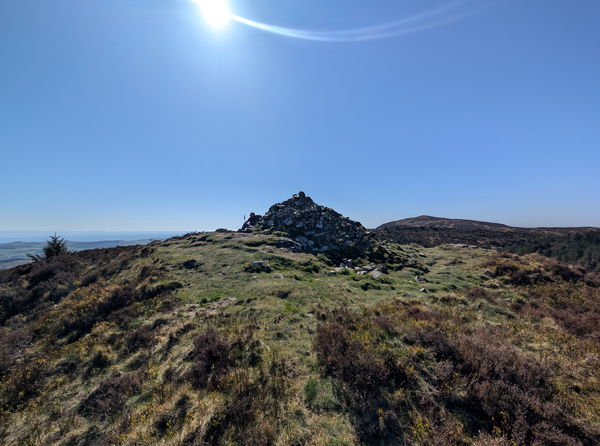
Screel Hill
Hill Dumfries And Galloway ScotlandScreel Hill is a rocky outcrop (344m) with beautiful coastal views over the Solway Firth in Dumfries & Galloway.
More Fountains
So this fountain wasn't enough and you want more? Don't worry we have you covered.

Sybil's Well
Fountain Branxton NorthumberlandA well head commissioned by Lady Waterford that was once fed by a natural spring and linked to the Battle Of Flodden.
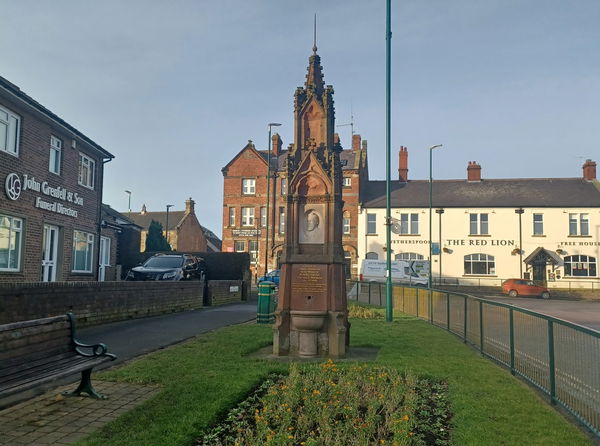
Dr Trotter's Memorial
Fountain Bedlington NorthumberlandFountain commemorating Doctor James Trotter, local councillor known as 'Mr Bedlington' during Victorian times.

Ravensworth Fountain
Fountain Whittingham NorthumberlandA memorial drinking fountain, dedicated to the memory of the 3rd Earl Ravensworth in Whittingham.
Never Miss A Fabulous Place
If you are afraid of missing out on all the fabulous places we post, or just want to be the first to know, then sign up to the Fabulous North.
Each week we will email you all the brand new places that we visit.
Sign Up To AlertsFind Us On Facebook
We post all our new places daily on our Facebook Groups page, so join the group today and be notified when we add a new place.
Join Our Facebook GroupColvin Fountain (Moffat Ram) was listed in Fountain // Scotland // Dumfries And Galloway

